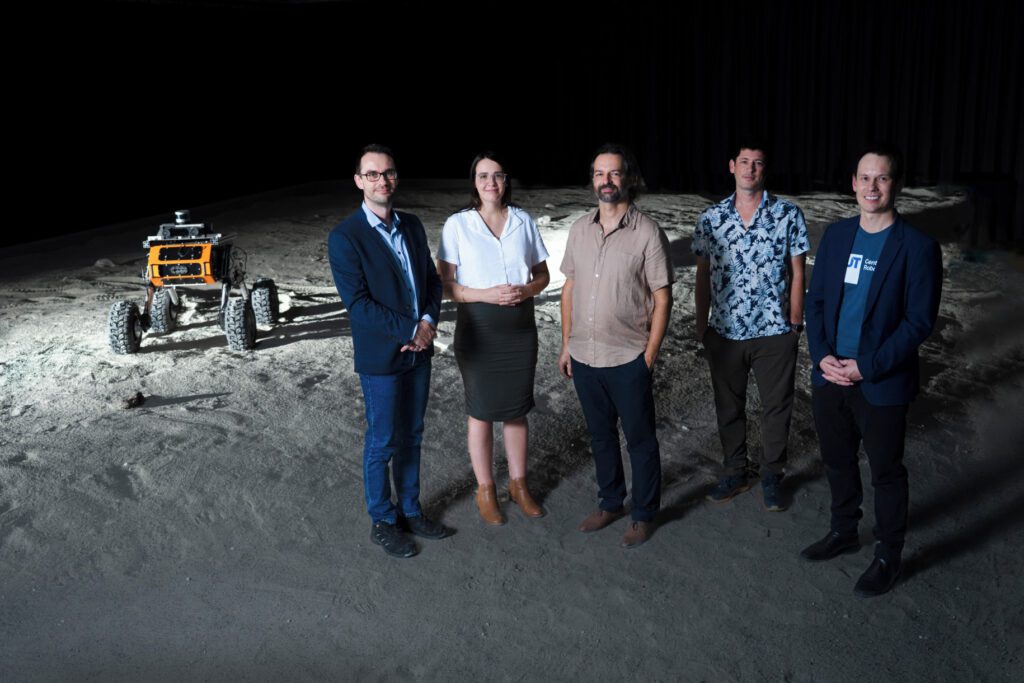What’s happening?
Australia is preparing to send its first lunar rover, and QUT researchers are steering the way to ensure the mission stays on course. The rover, affectionately named Roo-ver, will be designed, built, tested, and operated in Australia before heading to the Moon at the end of this decade.
QUT is leading the rover’s navigation system development as part of the national ELO2 consortium, which brings together industry, research organisations, 10 universities, and the Australian Space Agency.
Why it matters
Associate Professor Thierry Peynot from the QUT Centre for Robotics is heading the project. He said the key challenge is creating reliable navigation in an environment with no GPS satellites and limited computer power.
“A core focus of our work will be using the lander as a landmark to guide the rover during the mission, while using limited resources. We will also be investigating visual object detection – detecting rocks, craters and other phenomena of interest,” he explained.
Professor Michael Milford, Director of the Centre, said the Moon’s harsh environment demands a new way of thinking. “There are no GPS satellites, the terrain is harsh and computing resources are limited. Our team is working on new approaches to robotic vision, scene understanding and localisation that will help keep Roo-ver safe and on course.”
Local impact
The navigation systems are being tested at Yandiwanba, QUT’s new Brisbane facility and the largest covered testing space in Australia for robotics and lunar equipment. The name Yandiwanba, a Yugara word meaning “to go from the ground to a higher place,” reflects its purpose. The site features a 19m x 11.4m test bed filled with lunar regolith simulant, enabling researchers to recreate Moon-like conditions.
By the numbers
-
The Australian Government has committed $42 million through the Space Agency to support this phase of the mission.
-
Roo-ver will travel 384,000 kilometres from Earth to the Moon to begin its exploration.
-
QUT’s Yandiwanba lunar test bed measures 19 metres by 11.4 metres and is filled with regolith simulant.
-
A total of 10 universities are contributing expertise to the mission through the ELO2 consortium.
Zoom in
The QUT team includes Associate Professor Peynot, Professor Milford, Professor Niko Suenderhauf, Dr Dimity Miller, and Associate Professor David Flannery. Their collective skills in robotics, planetary science, and Earth sciences are being channelled into making Roo-ver’s navigation possible.
ELO2 and Roo-ver Mission Director Ben Sorensen praised the effort: “Navigating the terrain of the lunar surface, 384,000 kilometres away, is an incredibly complex task, and the work Professor Peynot and his team are undertaking on Roo-ver’s navigation systems will be vital to the Mission’s success.”

Zoom out
Australia’s role in lunar exploration is growing, backed by expertise in automation, advanced manufacturing, and remote operations. QUT’s robotics teams already work in extreme environments such as Antarctica, where they operate drones and submersible robots. The parallels help sharpen technology for the ultimate test: the Moon.
What to look for next
The mission continues through the decade before Roo-ver’s launch. Right now, QUT is sharing its progress at the 76th International Astronautical Congress (IAC), taking place in Sydney from 29 September to 3 October.






